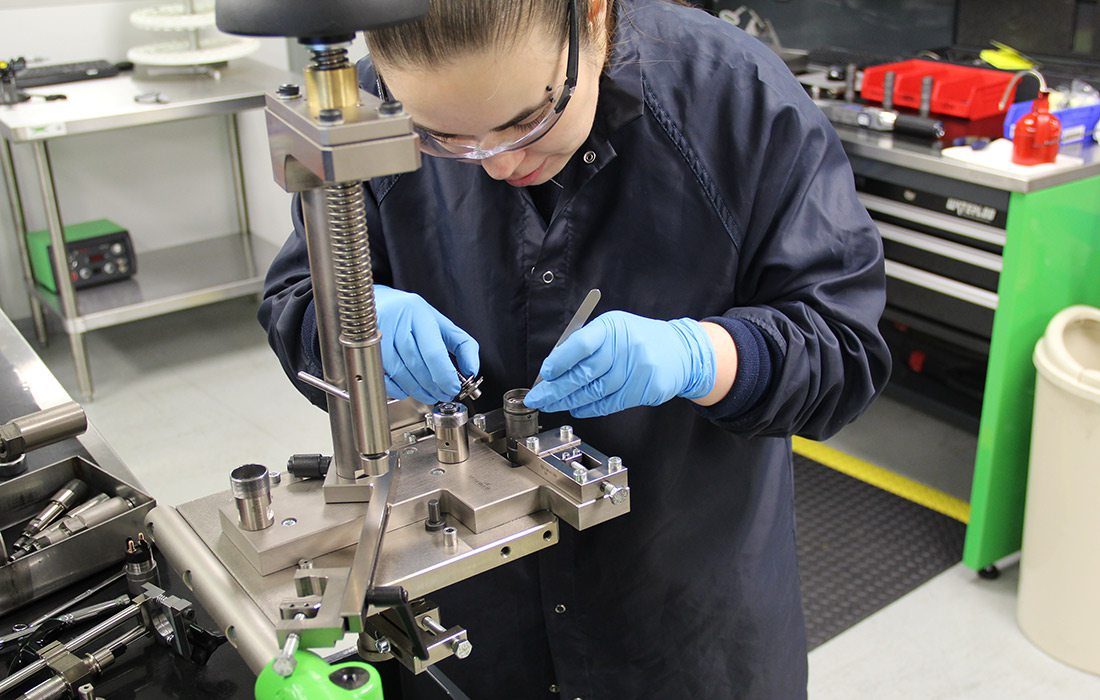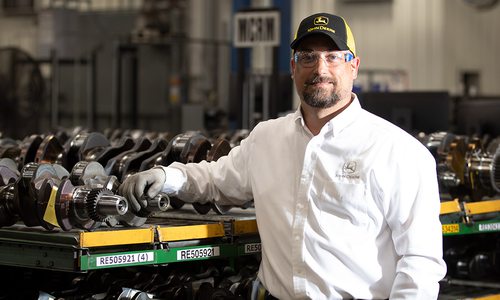
Manufacturing
The Future of Remanufacturing
Did you know Springfield is known as the remanufacturing capital of the world? Called the “ultimate form of recycling,” it just might be the ticket to making money and saving the planet.
By Claire Porter
Nov 2019

We’ve all been there: The camera gives out on your iPhone or something fails in your car’s engine, and the cost of repairing or replacing what’s broken exceeds the price of buying a new product. But what if there were a cheaper way that didn’t require the time, labor and resources that go into creating something anew? There is, and it’s called remanufacturing.
Jobs in remanufacturing are often tech-heavy and precision-focused on the factory floor, although, as in any business, jobs are varied and widespread. The industry is most commonly known for its applications in agriculture, automotive and construction. “Our customers are the builders and growers of the world,” says Jamie Sullivan, marketing manager at CNH Industrial Reman, a Springfield-based joint venture between CNH Industrial and Springfield Remanufacturing Corp., which is the first southwest Missouri company to get started in remanufacturing.
“We cannot be the throwaway, consumable society that we have been for the past 50 or 75 years.”— Jamie Sullivan, Marketing Manager at CNH Industrial Reman
Remanufacturing is the process of reclaiming products from customers and dealers; disassembling, cleaning and testing each component to the original equipment manufacturer's specifications or better; machining or replacing inadequate components; re-testing the whole product; and returning it to the customer at a new or better-than-new quality. The process lessens the environmental toll of sourcing raw materials, which is a global focus during our climate crisis. “We cannot be the throwaway, consumable society that we have been for the past 50 or 75 years,” Sullivan says. “We can’t do that anymore. Our resources are limited. [With remanufacturing], our resources, our raw materials, already exist.”
If the environmental benefits of remanufacturing aren’t appealing enough, the cost savings surely are. “For us to be able to reclaim [components] and machine them, it allows us to save money, and it allows us to pass those savings on to our customers, who can pass it on to their customers,” Sullivan says, meaning demand is ramping up as customers discover the value in using remanufactured goods.
So what does this mean for those of us who are non-farmers—mere iPhone users and car drivers? It means that there is an eco-conscious global industry looking for skilled employees. “It’s a pretty compelling proposition,” Sullivan says. She notes that there is a shortage of qualified workers in remanufacturing, and companies are looking for students with mechanical aptitude. Sullivan points out that reman’s growth means companies also need support staff: sales people, HR professionals, sales and marketing experts, product managers, supply chain supervisors, engineers and so on. If a new career is in the books, remanufacturing might be your ticket to keeping trash out of our landfills and carbon dioxide out of our atmosphere, so you can go green while making some green of your own.
Remanufacturing at a Glance
Statistics Courtesy Remanufacturing Industries Council, IBISWorld Market Research and CNH Industrial
85%
less energy needed (on average) to remanufacture a part than to make new.
$6 billion
total U.S. revenue for the auto part remanufacturing industry in 2018.
$9 billion
total U.S. revenue for the engine remanufacturing industry in 2018.
Over 275
employees at CNH Industrial Reman in 2019. The company had just 9 employees in 2009.












